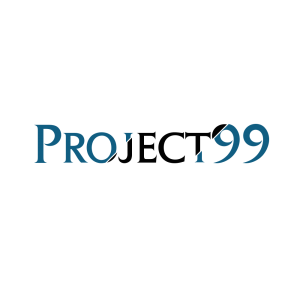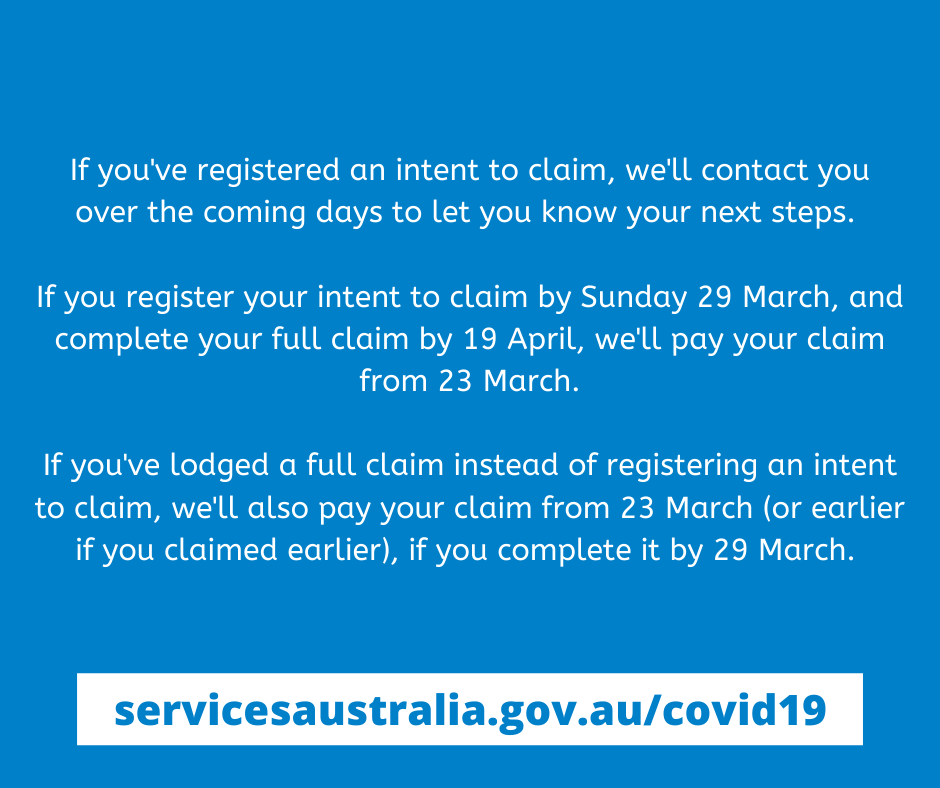JobKeeper
In the third and largest economic stimulus package up to 6 million workers are set to be eligible for the $130 billion wage subsidy, known as the JobKeeper payment.
The flat $1,500 payment, which will be delivered by the ATO, will be paid to businesses, and will include businesses which have been structured through companies, partnerships, trusts and sole traders.
The full $1,500 a fortnight, before tax, to eligible employees will be required to pass on by employers.
Eligibility – businesses with a turnover of < $1 billion will need to self-assess a reduction in revenue of 30 per cent or more, relative to a comparable period a year ago.
Qualified employees will include those employed by the employer as at 1 March 2020, including those who have been stood down and retrenched workers can be re-employed to qualify for the JobKeeper payment.
How to apply and Participation in JobKeeper
- Eligible businesses, will need to register an intention to apply on the ATO’s website. and additional information will come from the ATO about how and when claims for JobKeeper can be made.
- A payment period is a rolling 14 day period commencing Monday 30 March 2020 and ending on Sunday 27 September 2020 (6 Months)
- Information on the number of eligible employees engaged as at 1 March 2020 and those currently employed by the business, including those stood down or rehired, will need to be provided to the ATO, although the Tax Office will look to use Single Touch Payroll data to pre-populate the employee details for the business.
- The ATO will make payments to the employers monthly in arrears, but the first payment will be sent in the first week of May and will be backdated to 30 March 2020 to allow employers to start paying their workers now.
- Employers will be required to report the number of eligible employees employed by the business to the ATO on a monthly basis.
- A normal payroll is run for employees and reported via Singe Touch Payroll (STP). The claims process will then be linked to STP to support the JobKeeper payment to the employer. If you do not use STP (eg Sole Trader, Trust Beneficiary, Director Fee, Dividend in Lieu of Labour etc) A manual claim process will apply.
- The payment is treated as ordinary income for an employee and is subject to PAYG withholding tax.
- An employer will be required to advise an employee if they have been nominated as an eligible employee for which an employer will be reimbursed a JobKeeper payment.
Contrived schemes and consequences
The legislation also makes clear that anyone who enters into or carries out a scheme for the sole or dominant purpose of obtaining a corona virus economic response payment will face a wide range of administrative and criminal sanctions, including up to 10 years’ imprisonment.
However, the legislation empowers the commissioner to call out any change in the financial position of any entity as part of a scheme designed to improperly pocket JobKeeper cash, and the ATO has extensive payback powers.
The legislation has clawback rules empowering the ATO to recover overpaid amounts and target those who weren’t entitled to payments received, plus interest.
Eligibility for employers
Definition of turnover:
For existing business:-
- works on your BAS – if you are cash or accrual preparer. If you prepare your BAS as cash then you look at your Profit and Loss under a cash basis. If you are accrual then you check your PL as accrual. looking at the same period eg. Jan – March compared 2019 to 2020.
For the Start up business that has not been trading for over a year:
- the ATO is working out how to report.
If your business turnover has not declined by 30% or 50% but is expected to at some point?
- YES – Still go in and register.
I am self-employed Sole Trader, do I qualify?
- YES – meeting some criteria – your 2019 income tax has been lodged prior to 12th of March 2020, Your BAS have been lodged
If I operate as a partnership, can each partner receive JobKeeper?
- NO – only one (1) partner can receive the JobKeeper payment
If I operate my business through a trust, can I receive the JobKeeper payment?
- YES – but still only one (1) person can receive the JobKeeper
I operate as a company and usually pay myself a director fee. Can I receive JobKeeper payments?
- YES – One (1) shareholder or director can claim
As one of these types of businesses, how do I apply for the JobKeeper program?
- it will be an online application
Employees will be eligible if:
They are currently employed by an eligible employer or who were in that employment on 1 March 2020 and continue to be employed (even if currently stood down)
- Is full-time, part-time or a casual who is employed on a regular and systematic basis or longer than 12 months as at 1 March 2020
- Aged 16 years or older at 1 March 2020
- An Australian citizen, a permanent visa holder or a special category holder ) eg 444 subclass) as at 1 March 2020.
- Is a resident for Australian Income Tax purposes
- Not in receipt of a JobKeeper payment from another employer.
I started with my employer after 1 March 2020 am I eligible for JobKeeper?
- NO – only if you have been stood down
As a casual employee, how does JobKeeper affect me?
- You need to be with the same employee for over 12 months.
If I am an employee on a fixed-term contract, how does JobKeeper affect me?
- You are eligible if the contract started before the 1 March 2020
If my employer has put me on paid or unpaid leave can I still receive JobKeeper?
If I am receiving Workers Compensation, can I receive Job Keeper payments?
- YES – if you are doing light duties while still receiving Work Cover and some wages
- NO – if you are only receiving work cover payments
What if I am on Parental Leave?
- NO – You are not eligible to receive the JobKeeper
Where I have a salary sacrifice arrangement in place, how does the Job Keeper payment impact such an arrangement?
- It does not any effect to your arrangement
Payments:
I have paid my employees, when does my business get reimbursed the JobKeeper payment?
- The first week of May 2020
How often will the ATO make payments to my business?
What is if pay my employees monthly not fortnightly?
- the ATO will average it to fortnightly amounts, to make sure it has been passed on to the employee
If I have stood employees down after 1 March 2020 what do I do for these employees?
- register and start paying the min $1500 per fortnight to the employees that are eligible
If my business is still operating and my employees are working do I still get a JobKeeper reimbursement?
If I currently pay an employee less the $1500 per fortnight how am I impacted by the JobKeeper arrangement?
- You must top up there pay to match the JobKeeper payment
If I currently pay an employee more than $1500 per fortnight how am I impacted by the JobKeeper arrangement?
- the difference of their pay is out of the business
- You must top up there pay to match the JobKeeper payment
If I currently pay an employee more than $1500 per fortnight how am I impacted by the JobKeeper arrangement?
- the difference of their pay is out of the business
If I let my employees go after 1 March 2020, re-hire them and then immediately stand them down, what is the JobKeeper impact?
- YES – they are eligible for JobKeeper when you bring them back, the employee must de-register from JobSeeker payments.
I don’t have enough funds to pay eligible employees until I receive the reimbursement, what should I do?
- The JobKeeper must be paid in Arrears, there are many loans that you can apply for
If an employee resigns after I receive a JobKeeper payment, what must I do?
- When you submit that months report to the ATO you take them off the list, if you employ a new person to replace them that employee is not eligible
How does PAYG withholding and Superannuation apply to a JobKeeper payment that I make to an employee?
- PAYG is to be deducted from the employee and paid to the ATO via your BAS as per normal pay run.
- Super is payable if the employee is still working.
- Super is NOT payable if you are paying the JobKeeper to the employee as a stand-down (not working)
- Super does not need to be paid on the difference of the employees pay if you are topping them up with the JobKeeper payment, eg. employee normally gets $1000 FT now gets $1500 super is only on the $1000 as per normal. It is up to the employer if you pay super on the extra $500.
If an employee I had to let go or was stood down is receiving a JobSeeker payment, how does JobKeeper impact both me and my employee?
- Once you have advised the employee that they are on JobKeeper payments, the employee needs to tell Centerlink to cancel the JobSeeker payments. There will be data matching, note, the employee cannot claim both and they will need to pay back any amount they received unlawfully.
Timing
The JobKeeper program is effective from 30 March 2020 and runs for 6 months until 27 September 2020. They will be made to eligible employers monthly in Arrears, with the first payment being made in the first week of May 2020.
Compliance and other issues
The JobKeeper program will be subject to ATO audit activity and there will be obligations on employers to establish their eligibility as well as that of their employees.
The ATO will cross-check payments with Services Australia data as well as other agencies to identify any multiple payments made.
There is further guidance coming from the ATO to assist businesses to assess eligibility, in particular, the ATO focus will be on ‘manipulation’ of turnover for a business that seeks to qualify. Businesses that are identified as ‘manipulation’ will face penalties.
Examples:
- Employer with employees on different wages
Greg owns a travel business with two employees. The business is still operating at this stage, but Greg expects that turnover will decline by more than 30 per cent in the coming months. The employees are:
- Brooke, who is a permanent full-time employee on a salary of $2,000 per fortnight before tax and who continues working for the business; and
- Zac, who is a permanent part-time employee on a salary of $800 per fortnight before tax and who continues working for the business.
Greg is eligible to receive the JobKeeper payment for each employee, which would have the following benefits for the business and its employees:
- The business continues to pay Brooke her full-time salary of $2,000 per fortnight before tax, and the business will receive $1,500 per fortnight from the JobKeeper payment to subsidise the cost of Brooke’s salary and will continue paying the superannuation guarantee on Anne’s income;
- The business continues to pay Zac his $800 per fortnight before tax salary and an additional $700 per fortnight before tax, totalling $1,500 per fortnight before tax. The business receives $1,500 per fortnight before tax from the JobKeeper payment which will subsidise the cost of Zac’s salary. The business must continue to pay the superannuation guarantee on the $800 per fortnight of wages that Zac is earning. The business has the option of choosing to pay superannuation on the additional $700 (before tax) paid to Nick under the JobKeeper payment.
Greg can register his initial interest in the scheme from 30 March 2020, followed subsequently by an application to the ATO with details about his eligible employees.
In addition, Greg is required to advise his employees that he has nominated them as eligible employees to receive the payment. Greg will provide information to the ATO on a monthly basis and receive the payment monthly in arrears.
2. Self-employed
Sienna is a sole trader running a florist. She does not have employees. Sienna’s business has been in operation for several years. The economic downturn due to the coronavirus has adversely affected Sienna’s business, and she expects that her business turnover will fall by more than 30 per cent compared to a typical month in 2019.
Sienna will be able to apply for the JobKeeper payment and would receive $1,500 per fortnight before tax, paid on a monthly basis.
Please feel free to share to any person you may think may benefit 😊
If you need any assistance, please get in contact with us at
stephen@smbaccounting.com.au
P 1300 854 159





